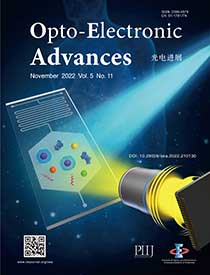2022 Vol. 5, No. 11
Cover story: Yuan XL, Darcie T, Wei ZY, Aitchison JS. Microchip imaging cytometer: making healthcare available, accessible, and affordable. Opto-Electron Adv 5, 210130 (2022).
The Microchip Imaging Cytometer (MIC) is a class of integrated point-of-care detection systems based on the combination of optical microscopy and flow cytometry. MIC devices have the attributes of portability, cost-effectiveness, and adaptability while providing quantitative measurements to meet the needs of laboratory testing in a variety of healthcare settings. Based on the use of microfluidic chips, MIC requires fewer samples and may complete sample preparation automatically. Therefore, MIC may provide quantitative testing results simply using a finger prick specimen. The decreased reagent consumption and reduced form factor also help improve the accessibility and affordability of healthcare services in remote and resource-limited settings. Dr. Xilong Yuan and Prof. J Stewart Aitchison from University of Toronto reviewed the recent advances in Microchip Imaging Cytometry from the following aspects: clinical applications, microfluidic chip integration, imaging optics, and image acquisition techniques. It is anticipated that enormous Microchip Imaging Cytometry related technologies will be investigated and developed in the following decade to meet the emerging needs in healthcare. The research and development of Microchip Imaging Cytometry may allow the deployment of more economical, easy-to-use, and accessible diagnostic tests.
Back cover story: Saraj CS, Singh SC, Verma G, Rajan RA, Li W et al. Laser-induced periodic surface structured electrodes with 45% energy saving in electrochemical fuel generation through field localization. Opto-Electron Adv 5, 210105 (2022).
Electrolysis and photolysis break water into hydrogen and oxygen. These methods are easy to control, with high energy density, portable, and with minimal pollution. So far, platinum and RuO2 have been widely recognized as the most electroactive catalysts for hydrogen evolution reaction (HER) and oxygen evolution reaction (OER) but their high cost limits the large-scale application. A cheap, environmentally friendly catalyst can significantly improve the hydrogen technology by replacing the current catalysts that are harmful chemicals. Dr. Chaudry Sajed Saraj and Prof. Wei Li from the Changchun Institute of Optics, Fine Mechanics, and Physics (CIOMP) of the Chinese Academy of Sciences (CAS) proposed laser-induced periodic surface structured (LIPSS) electrodes that save 45% of the energy needed to make electrochemical fuel through field localization. Researchers designed LIPSSs on Ni-foam and modified geometric characteristics utilizing localized electric field-induced enhancement in the reagent concentration (LEFIRC). 3-94 nm spherical nanoparticles cover hierarchically organized LIPSSs electrodes with 100-300 nm ridges and grooves. LEFIRC increases electrochemical fuel generation via HER and OER. The optimized LIPSS patterned electrode generates 3x1016 hydrogen molecules cm-2s-1 at 10 mA/cm2. The electrocatalyst is supported by LEFIRC-enhanced LIPSS electrodes. HER and OER model electrocatalysts on LIPSS-patterned substrate needed 130 mV (40%) and 100 mV (25%) lower overpotentials, respectively. Patterned LIPSS electrocatalysts function at lower voltages and achieves efficient stability. This suggests that femtosecond laser patterning will produce green catalysts and can be applied to any metal and semiconductor catalysts for a range of electrochemical reactions.

-
{{article.year}}, {{article.volume}}({{article.issue}}): {{article.fpage | processPage:article.lpage:6}}. doi: {{article.doi}}{{article.articleStateNameEn}}, Published online {{article.preferredDate | date:'dd MMMM yyyy'}}, doi: {{article.doi}}{{article.articleStateNameEn}}, Accepted Date {{article.acceptedDate | date:'dd MMMM yyyy'}}CSTR: {{article.cstr}}
-
{{article.year}}, {{article.volume}}({{article.issue}}): {{article.fpage | processPage:article.lpage:6}}. doi: {{article.doi}}{{article.articleStateNameEn}}, Published online {{article.preferredDate | date:'dd MMMM yyyy'}}, doi: {{article.doi}}{{article.articleStateNameEn}}, Accepted Date {{article.acceptedDate | date:'dd MMMM yyyy'}}CSTR: {{article.cstr}}

 E-mail Alert
E-mail Alert RSS
RSS



